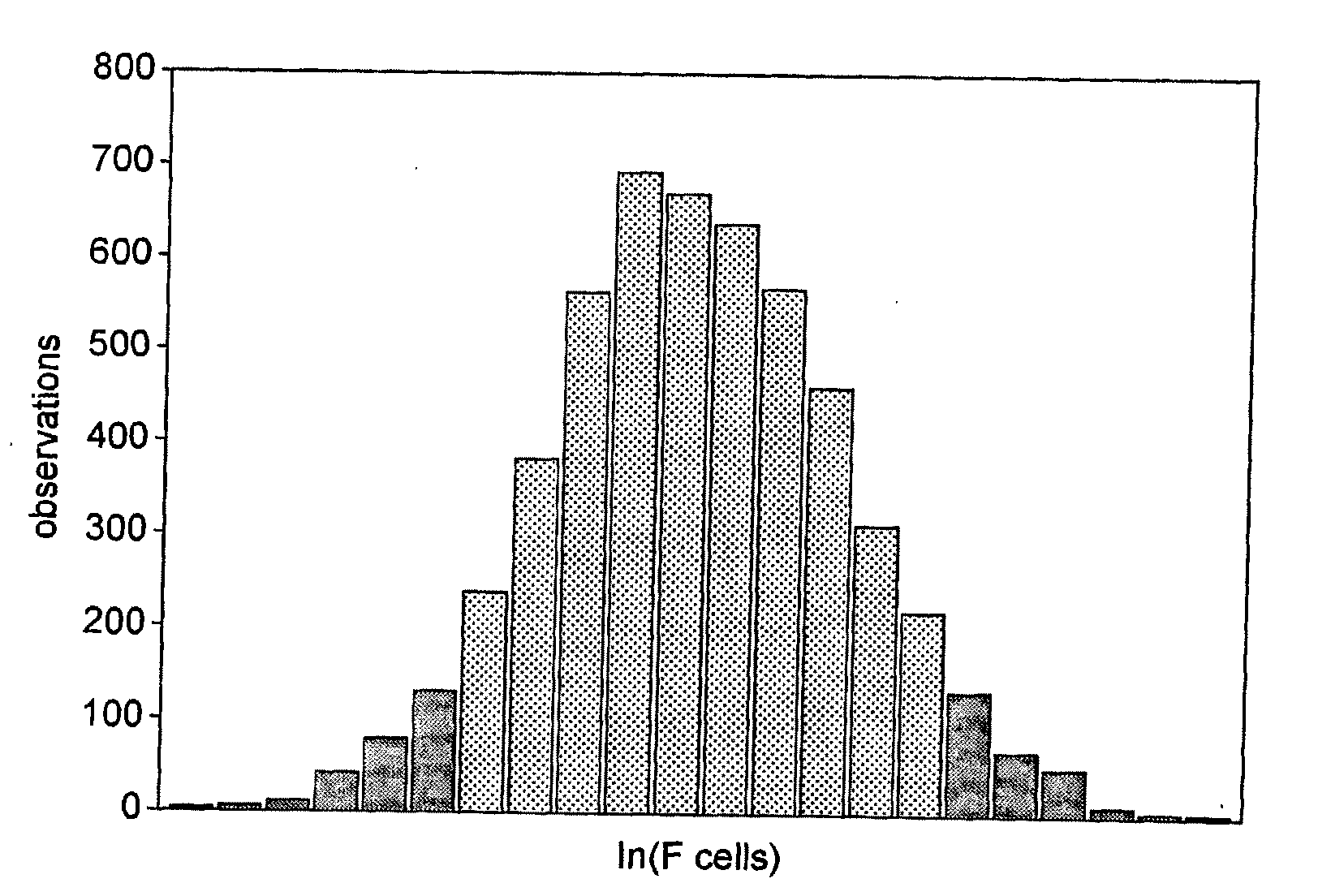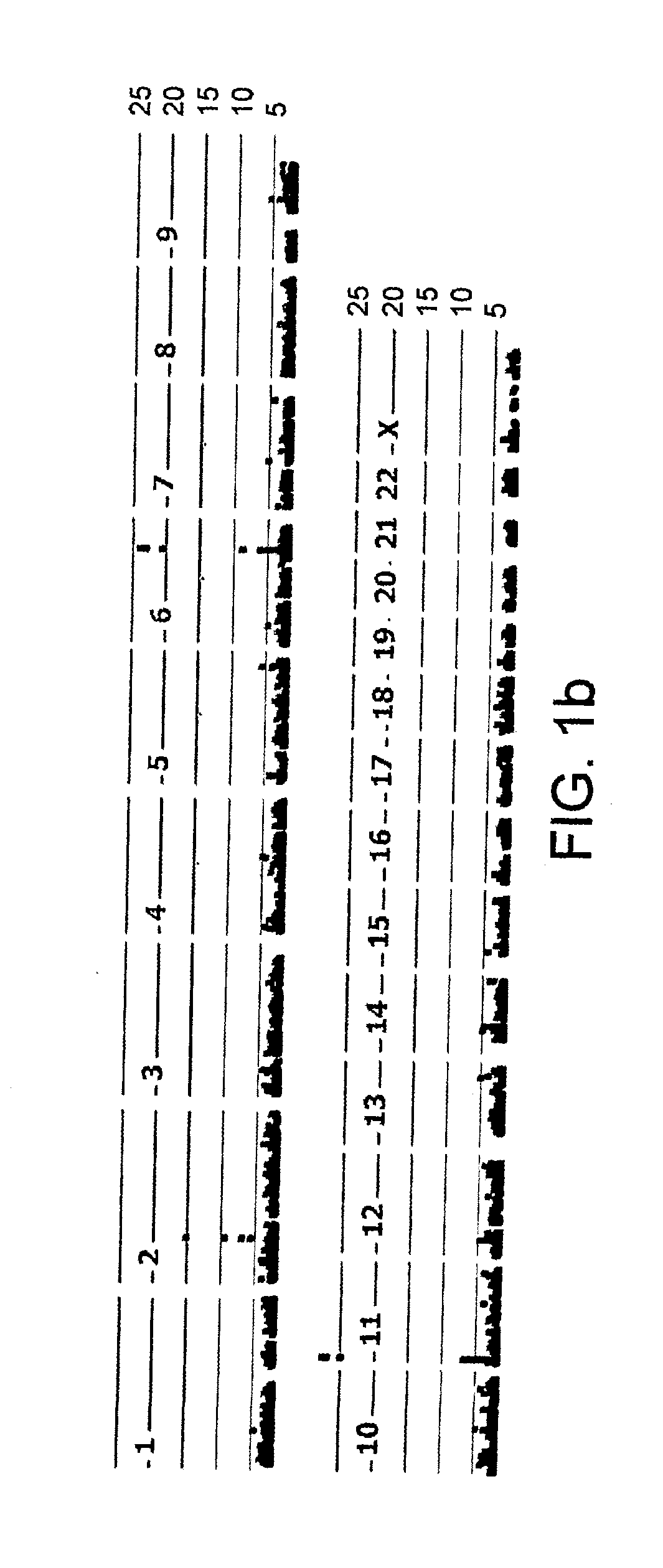Method
a technology of method and method, applied in the field of methods, can solve the problem of not being able to define this on a molecular basis
- Summary
- Abstract
- Description
- Claims
- Application Information
AI Technical Summary
Benefits of technology
Problems solved by technology
Method used
Image
Examples
example 1
Summary
[0297]F cells measure the presence of fetal hemoglobin (HbF), a heritable quantitative trait in adults that accounts for substantial phenotypic diversity of sickle cell disease and β thalassemia. A genome-wide association mapping strategy applied to individuals with contrasting extreme trait values led to mapping of a novel F cell QTL to BCL11A, a zinc-finger protein on chromosome 2p15. The 2p15 BCL11A QTL accounts for 15.1% of the trait variance.
Introduction
[0298]Genome-wide association is a promising new methodology that has recently identified susceptibility loci for several diseases1,2, but it has relatively high per sample cost and requires large samples to detect modest risk effects. Strategies to increase power include selection of study subjects with an increased genetic load through early onset or familial clustering of disease. Here, we apply a powerful alternative approach that uses a comparatively small number of study subjects taken from the extremes of a quantit...
example 2
Summary
[0345]Individual variation in fetal hemoglobin (HbF, α2γ2) response underlies the remarkable diversity in phenotypic severity of sickle cell disease and β thalassemia. HbF levels and HbF-associated quantitative traits (e.g. F cell levels) are highly heritable. We have previously mapped a major QTL controlling F cell levels in an extended Asian-Indian kindred with β thalassemia to a 1.5 Mb interval on chromosome 6q23, but the causative gene(s) are not known. The QTL encompasses several genes including HBS1L, a member of the GTP-binding protein family that is expressed in erythroid progenitor cells. In this high-resolution association study we have identified multiple genetic variants within and 5′ to HBS1L at 6q23, that are strongly associated with F cell levels in families of Northern European ancestry (p=10−75). The region accounts for 17.6% of the F cell variance in northern Europeans and is associated with F cell levels in the extended Asian-Indian kindred. Although mRNA l...
example 3
SNP Typing Protocol
[0406]The single nucleotide polymorphism (SNP) genotyping assays will be carried out using the Illumina® GoldenGate® assay system with VeraCode™ technology. Up to 384 SNPs can be interrogated simultaneously within a single well of a standard microplate. Genomic DNA is isolated from peripheral blood using standard techniques. The DNA is diluted to 50 ng / μl. Each assay requires 250 μg of DNA.
[0407]The following steps are a summary of the Illumina® Golden Gate® system:
[0408]1. Activation step to enable binding to Streptavidin / Biotin paramagnetic particles
[0409]2. Add DNA to oligonucleotides and hybridize (3 oligos are designed for each SNP locus, two allele-specific Cy3 or Cy5 forward primers and one locus-specific reverse primer which also carries a unique SNP-identifier address oligo).
[0410]3. The product then goes through an extension, ligation and clean up protocol
[0411]4. The product is then used as a template for PCR using the hybridized universal dye-labelled ...
PUM
| Property | Measurement | Unit |
|---|---|---|
| sizes | aaaaa | aaaaa |
| diameter | aaaaa | aaaaa |
| Tm | aaaaa | aaaaa |
Abstract
Description
Claims
Application Information
 Login to View More
Login to View More - R&D
- Intellectual Property
- Life Sciences
- Materials
- Tech Scout
- Unparalleled Data Quality
- Higher Quality Content
- 60% Fewer Hallucinations
Browse by: Latest US Patents, China's latest patents, Technical Efficacy Thesaurus, Application Domain, Technology Topic, Popular Technical Reports.
© 2025 PatSnap. All rights reserved.Legal|Privacy policy|Modern Slavery Act Transparency Statement|Sitemap|About US| Contact US: help@patsnap.com



